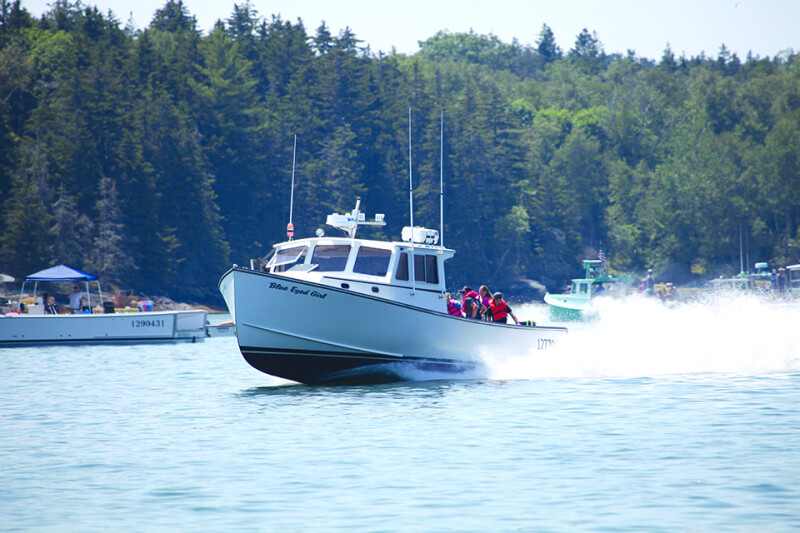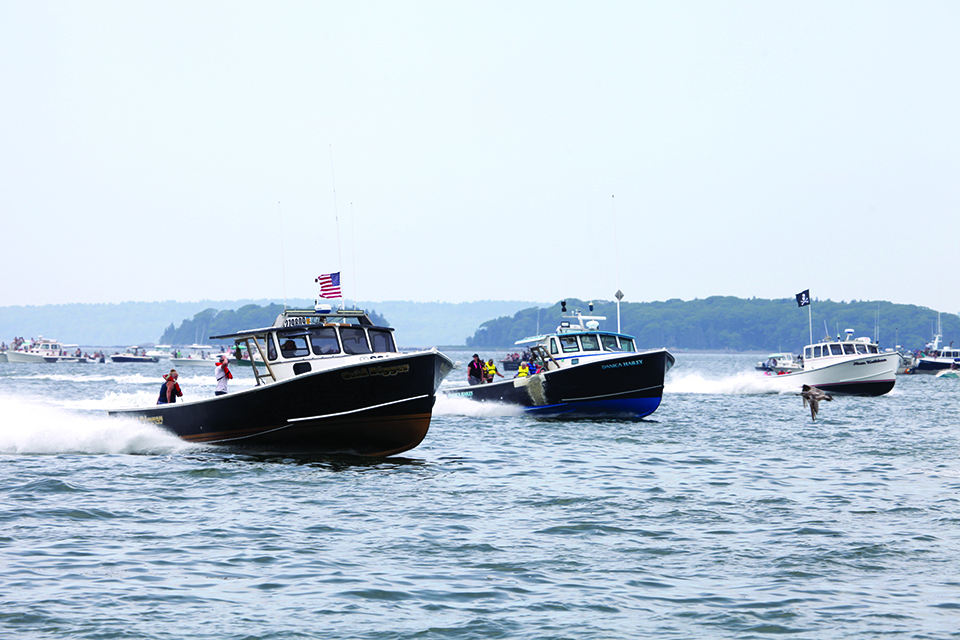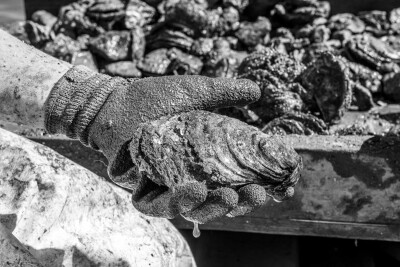When it comes to marketing diesel engines to Maine lobstermen and fishermen in general who like to get to the fishing grounds and back in a hurry, engine companies and dealers seem to be missing an opportunity in their advertising and marketing by not emphasizing a particular engine’s ability to deliver a lot of high-speed power.
That’s especially true for Maine lobstermen, for if there’s one thing many Maine lobstermen love to do, it’s race.
The most obvious example is Maine’s Lobster Boat Racing season, which takes place from June through August. In 2022 it consisted of 11 races, with each event having about 30 races. On an exceptionally well-attended day, 80 boats might show up to race down a local harbor’s version of a mile-long drag strip.
A diesel-engine brand that’s been making something of a name for itself at these races is Scania. A good example is last summer’s races at Friendship on Sunday, July 17, and the following Sunday at Harpswell. At Friendship, 47 boats showed up to race. One of those was Blue Eyed Girl, a Morgan Bay 38 with a 900-hp Scania. Blue Eyed Girl won the Fastest Lobster Boat race, clocking 45.4 mph down the mile-long course, and then won the Diesel Free For All hitting 49.6 mph, which was the fastest time of the day.
At Harpswell, Blue Eyed Girl won both the Diesel Free For All and the Fastest Lobster Boat Races with the fastest time of 43.2 mph, though one of the races organizer, Jon Johansen, figures the speed was closer to 50 mph. The slower recorded speed was due to not having the radar gun properly aligned.

Blue Eyed Girl wasn’t the only Scania-powered lobster boat to gain recognition that day. A race that garnered a lot of attention was Class J (551 to 700 hp, 36 feet to 39 feet 11 inches). Three Scania-powered lobster boats lined up for that race: Gold Digger, a Wayne Beal 36 with a 675-hp Scania; Danica Haley, a Calvin 36 with a 675-hp Scania and Mean Kathleen, a Wayne Beal 36 with a 700-hp Scania. Gold Digger took the race at 39 mph, followed by Danica Haley and then Mean Kathleen.
What accounts for the Scania success at Maine’s lobster boat races? David Hughes, sales manager for Scania marine products, says it’s the way the horsepower to torque and the weight ration work out.
Scania has “a very favorable horsepower to weight ration, and the torque delivered from the engine tends to be delivered early on in the engine rpm,” says Hughes. That gives a Scania diesel “more useable power quicker.”
Beyond that, for a Scania-powered lobster boat — or a lobster boat powered with any other engine — to be successful in Maine’s races, a balanced drive-line package is needed with the right gear ratio combined with the right propeller, combined with the right engine and right hull design.
Scania engines or any other stock engines “are not race engines per se,” notes Hughes, because any lobsterman can buy one through a dealer. “But it’s important to have all those things notched to function properly.”
The hull’s design is also critical to be a successful high-speed lobster boat. Over the years, the lines of lobster boats have become beamier with the need to carry more traps in an increasingly competitive fishery and to take advantage of larger and more powerful engines. Engines with more horsepower led to beamier boats because as power increased, narrower boats started laying over. In the days of building wooden lobster boats, it was a bit easier to alter the lines for each new lobster boat.
Beals Island and Jonesport builders were well known for designing and building exceptionally fast wooden lobster boats. Freddy Lenfesty, a Jonesport builder of wooden lobster boats, designed his lobster boats so as the speed increased, the hull lifted out of the water but didn’t tip by the stern or by the bow.
Keeping the boat as light as possible — today, it’s mostly with composite construction —increases a lobster boat’s chances of success on race day. As an aside, Lenfesty was a bit unusual in his passion for racing, for it is said that when he was offshore lobstering, there were a couple of times he encountered a Navy destroyer and raced the destroyer, keeping up with it for maybe a mile.
A diesel engine that won’t be in small boats or showing up at Maine’s lobster boat races but has definitely started making a name for itself in the commercial marine world over the past six years is Wabtec, with its Tier-4 and IMO-III compliant engines that meet EPA emissions standards in the 2,200 to 6,000 hp band.







